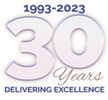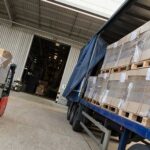
Our final Asia freight market report of the year includes the latest news from China, as the country finally relaxes COVID control measures and provides multi-modal situation updates and insights, together with carrier updates, that will provide you with critical insights for the weeks ahead.
China’s shift towards living with the virus means that people who have mild or no symptoms can quarantine at home and officials have been instructed to stop launching temporary lockdowns. The lifting of zero-COVID measures will help restore global supply chains and boost China’s economic activity.
Our offices in China are seeing an increase in bookings over November and even though demand is still at a far a lower level than last year, the shipping lines blanking of multiple sailings means that space is tight on some routes, with lines rolling cargo or offering space in early January.
Most regional supply chains, road transport, air and sea port operations are operating normally, though we have noted a reduction in sea freight volume for end December and January at Shenzhen, Guangzhou and Ningbo due to blanked sailings.
OCEAN
The Asia-Europe trade remains under pressure with falling spot rates, a generally soft trading environment and no sign of the market bottoming out.
Carriers are expected to announce more blank sailings as they seek to balance the supply equation in their favour – which is unlikely – and while residual congestion is still impacting parts of Europe, hopes are rising in China as the government finally begin to relax zero-COVID restrictions.
With transpacific volumes declining, rates have been declining, with west coast spot rates reaching pre-pandemic levels and while east coast rates have fallen, some capacity has been tied up in the continuing Savannah congestion .
Carriers have for months tried to support spot rates by blanking sailings, with 30% of transpacific capacity removed through blank sailings in December, while Asia to Europe services have seen 15% and 16% of capacity withdrawn in November and December.
Despite their efforts in removing significant amounts of capacity, they have not been able to match the rapid drop in demand and rate levels continue to plummet on both trades out of Asia, with little visibility on when the market slowdown will hit bottom.
In better news for U.S. shippers, one week before it was due to start, President Joe Biden signed legislation to block a national railroad strike that could have frozen almost 30% of U.S. cargo shipments and devastated the American economy.
Transatlantic rates are starting to soften, particularly to Europe and while there is no change to capacity expected through the end of 2022, the fall in volumes is reducing port congestion and vessel waiting times on both coasts.
After what seems like an eternity most ports are finally turning vessels around on schedule, although times are still tight in Savannah, Houston, Oakland and Vancouver.
Vessel schedules are still a work in progress, due to previous delays, inland transport and backlogs at terminals.
AIR
Rates on the major airfreight routes out of Asia have fallen from their 2021 record highs as capacity floods back into the market, with the resumption of passenger flights and the return of belly-hold space.
While rates have fallen sharply through the year, they remain significantly elevated
compared with pre-pandemic levels.
Spot market rates on the Asia to Europe indexes are down 23% year over year, but still more than double the rate in pre- pandemic 2019, while Asia to North America rates are less than half the rate last year, but 60% above 2019 and transatlantic rates are down 9% year over year but are still almost three times higher than November 2019.
The average price per kilo of cargo remains significantly higher than before the pandemic. Even in markets like the transatlantic, where the split between passenger and dedicated freighters is pretty close to pandemic levels, rates are still 30% or 40% higher.
Despite the challenging air cargo market conditions, CEOs at The International Air Cargo Association’s (TIACA’s) annual Air Cargo Forum remain optimistic that demand on the major east-west trade lanes will begin to recover in the first quarter of 2023 and after Chinese New Year, which falls on the 22nd January 2023.
TIACA delegates were told that while there has been a downturn in volume, markets are beginning to normalise, with demand in sectors such as Africa and the Americas and strong growth in e-commerce, which is another reason to be optimistic.
In a market update, Willie Walsh, director general of the International Air Transport Association (IATA), said global volume for the year to date was down on the exceptional performance recorded by carriers last year, but was tracking the levels seen in 2019.
Whatever challenges your supply chain may face, the price and capacity agreements we have in place with our long-term partner air and ocean carriers mean that we continue to deliver resilient and reliable supply chain solutions.
Our purchase order management and supply chain tracking technology support the most demanding global trading regimes, providing transparency and control. EMAIL Andy Costara to learn more and see how our technology can support your supply chain.





